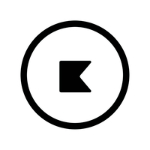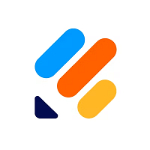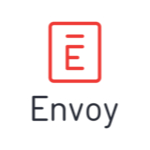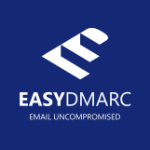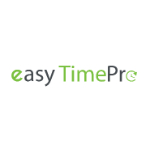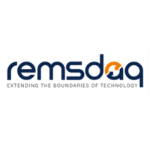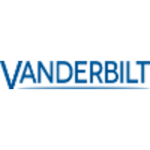List of Best Access Control System
Showing 10 of 26 productsKisi is a software that takes access control to the next level, enabling seamless and secure management of physical spaces. With its advanced features and user-friendly interface, Kisi helps businesses and organizations streamline their access contro...Read Kisi Reviews
RemotePC is a versatile remote access software that allows you to securely access and control your computer from anywhere, at any time. With its user-friendly interface features, RemotePC aims to enhance your remote working experience and make it mor...Read RemotePC Reviews
Jotform is a versatile and user-friendly online form builder that simplifies the process of creating, managing, and analyzing forms for businesses and organizations. With its intuitive drag-and-drop interface and powerful features, Jotform is the go-...Read Jotform Reviews
Envoy is a versatile is a software solution designed to simplify communication and streamline processes within any organization. With its user-friendly interface features, Envoy revolutionizes the way businesses manage visitors, deliveries, and more...Read Envoy Reviews
EasyDMARC is a simple and effective solution for protecting your email domain from phishing attacks and unauthorized use. With EasyDMARC, you can easily set up DMARC, SPF, and DKIM records to ensure the authenticity of your emails, giving you peace o...Read EasyDMARC Reviews
Johnson Controls is a globally recognized leader in providing innovative and sustainable building solutions. With a focus on creating smarter, safer and more efficient environments, Johnson Controls is dedicated to improving the lives of people aroun...Read Johnson Controls Reviews
EasyTimePro the ultimate time tracking solution designed to streamline your workflow and boost productivity. With user-friendly features and a sleek interface, EasyTimePro simplifies time management for individuals and teams alike. Say goodbye to man...Read EasyTimePro Reviews
EntroWatch is a solution for efficient and seamless monitoring of your business operations. With its advanced features and user-friendly interface, EntroWatch ensures that you stay on top of your business at all times. Say goodbye to tedious tasks an...Read EntroWatch Reviews
MEAU is a solution for all your business needs! With its advanced features and user-friendly interface, MEAU streamlines operations, increases efficiency and boosts productivity. Say goodbye to tedious tasks and hello to seamless processes with MEAU...Read MEAU Reviews
Vanderbilt is a leading software company with a reputation for innovation and excellence in the tech industry. With a diverse range of products that cater to all business needs, Vanderbilt is committed to providing top-notch solutions that help compa...Read Vanderbilt Reviews
- What Is Access Control System?
- Top Reasons Why Businesses Need Access Control System?
- What Are the Top Key Features of Access Control System?
- What Are the Top Benefits of Access Control System?
- What Are the Steps to Choose the Right Access Control System?
- What Are the Types of Access Control System for Different Industries?
- What Are the Technology Trends for Best Access Control System?
- What Are the Deployment Options for Access Control System?
What Is Access Control System?
Access control systems are specifically engineered to restrict access to designated critical areas inside a given system or location. The implementation of security measures can be achieved by the utilization of physical barriers, such as locks or doors, as well as the adoption of advanced technological solutions, such as biometric readers or digital keys.
Access control encompasses many methods, including user authentication and permission, which serve to ascertain the individuals who are granted access. The process entails the establishment of user roles in order to ascertain the appropriate allocation of access privileges to specific regions.
Security access control systems have the capability to be designed in such a way that they can approve access to particular individuals or groups for designated regions and resources, while simultaneously prohibiting access to unauthorized individuals or entities.
The best access control system enables organizations to effectively manage and regulate user access to their systems and resources, thereby facilitating the provision of appropriate levels of access to authorized individuals.
Additionally, administrators can maintain oversight by monitoring and analyzing user access records, thereby ensuring compliance with established security regulations.
In addition, top access control systems can incorporate automated control systems, such as closed-circuit television (CCTV), motion sensors, alarms, and access control panels, for the purpose of monitoring and safeguarding designated areas.
Access control systems are utilized to safeguard locations and resources of a sensitive nature by implementing limitations and overseeing user access, hence preventing unlawful entry. By implementing preset security protocols, administrators enable the regulation of user access, thereby establishing a secure environment conducive to monitoring and logging user actions.
Top Reasons Why Businesses Need Access Control System?
1. To restrict access to certain areas or physical premises: An access control system generally has various components, including cards, badges, readers, and software, which collectively provide the regulation of individuals' entry into certain areas.
2. To manage employee hours: Security access control systems are utilized for monitoring the ingress and egress of employees from the premises or specific areas, hence facilitating enhanced hour management.
3. To limit access of hazardous areas: The presence of specific premises may give rise to a possible safety hazard as a result of the nature of their contents. The best access control system has the capacity to restrict access to specific places, hence regulating the individuals who are granted permission to enter such spaces.
4. To ensure privacy and security: Cloud-based access control systems have the capability to limit unauthorized access, unauthorized modifications, and unauthorized removal of sensitive and secret data.
5. To reduce liability: The implementation of restricted access to specific places enables organizations to mitigate the risk of responsibility arising from unauthorized individuals entering these areas.
6. To protect valuable items: Smart access control systems are capable of safeguarding valuable commodities or goods against acts of pilfering and various sorts of theft.
7. To monitor movements: Organizations have the ability to deploy cloud-based access control systems in order to effectively monitor and record the movement of employees within their facilities.
8. To improve customer service: The best access control systems have the potential to minimize lines and waiting times by using automated procedures for customer identification and verification.
9. To save time: It offers a convenient and efficient means of swiftly validating users, hence eliminating the need for human verification of those entering certain areas.
10. To create an audit trail: It can be employed by businesses to establish a comprehensive record of individuals who have entered or departed specific facilities or areas.
11. To capture time and attendance data: By implementing a cloud-based access control system, organizations have the capability to securely store and analyze data pertaining to employee attendance.
12. To improve security: The implementation of an access control system can contribute to the establishment and maintenance of a secure environment.
13. To gather detailed information about visitors: It enables organizations to gather comprehensive data regarding visitors, including precise timestamps of their entry and exit from the premises.
14. To allow for remote access: The best cloud based access control systems have the capability to remotely authorize or restrict access to commercial premises.
15. To streamline maintenance and authorisation processes: Access control systems have the capacity to facilitate the optimization of maintenance chores within enterprises, while also enabling the efficient management of access privileges by issuing or cancelling them.
What Are the Top Key Features of Access Control System?
1. Identity Management: Access control systems facilitate the administration of user identities, allocation of access privileges, and surveillance of user actions within organizations.
2. Authentication: Access control systems offer many authentication methods to authenticate the identity of users prior to authorizing access. The aforementioned elements encompass biometrics, passwords, personal identity numbers, security tokens, and digital certificates.
3. Access Control Lists: Access control lists (ACLs) are employed to delineate the authorized users who possess privileges to access specific locations or resources.
4. Authorization: Authorization refers to the systematic procedure of bestowing users with specific rights and privileges, which are determined by their identity and authentication.
5. Audit Trails: Security access control systems produce audit trails that include details regarding the individuals who gained access, the specific resources they accessed, the time of access, and the location from which access was granted. This knowledge possesses the ability to effectively mitigate security concerns.
6. Security Policies and Procedures: The top access control systems facilitate the implementation of security policies and protocols within organizations, thereby restricting the individuals who are authorized to access particular resources or regions.
7. Encryption: Encryption is employed by cloud-based access control systems in order to guarantee the secrecy of data. This measure serves to safeguard confidential data from unlawful intrusion.
8. Intrusion Detection: The top access control systems provide the capability to identify and recognize instances where unauthorized individuals attempt to breach the security of networks and systems.
In the realm of network security, intrusion detection systems (IDSs) serve the purpose of actively monitoring network activities in order to identify and alert network administrators of any potentially malicious or suspicious behavior.
What Are the Top Benefits of Access Control System?
1. Enhanced security: An access control system has the capability to enhance the security of a given location by regulating the ingress and egress of individuals. Additionally, this technology can be employed to limit entry to certain locations, such as server rooms or spaces containing confidential data.
2. Improved accountability: By using a security access control system, one may effectively oversee the ingress and egress of individuals from a given location, hence facilitating prompt identification of the individuals accountable for any breaches in security.
3. Reduced costs: The best access control system has the potential to save operational expenses by necessitating a reduced number of staff for the supervision of access points.
4. Enhanced convenience: Automated smart access control systems have the capability to facilitate convenient access control by utilizing cards and tags, thereby enabling persons to swiftly and effortlessly access certain places.
5. Flexibility: The utilization of a top access control system enables the swift and effortless modification of access rights as required, hence facilitating the convenient adjustment of access controls in accordance with temporal parameters, specific dates, or particular user privileges.
6. Increased control: Access control systems facilitate the efficient management of access to specific locations, so guaranteeing that only individuals with the appropriate authorizations are granted access to designated areas or sensitive information.
What Are the Steps to Choose the Right Access Control System?
1. The scope of the best access control system needs to be determined. When contemplating the implementation of security measures, it is essential to carefully assess the specific locations that require protection and the particular types of access that necessitate control.
2. Assess the access control requirements by the specific demands and financial constraints of your enterprise. For instance, one may contemplate the magnitude of users, the tiers of access, and the requisite functionality.
3. It is recommended to research the various access control systems that are now available in order to determine their compatibility with your specific requirements. Please provide an estimation of the expenses associated with the installation, ongoing maintenance, and provision of technical assistance.
4. In order to proceed with the implementation of a top access control system, it is necessary to carefully choose a suitable system and afterward install the corresponding access control components, including card readers and other peripheral equipment.
5. Configure user access based on specified parameters, typically through a secure dashboard or control panel.
6. The system should be tested in order to verify that all components are operating according to the intended specifications.
7. It is imperative to provide comprehensive training to workers on the proper utilization of the system, accompanied by the provision of essential documentation for future reference.
8. Regularly monitor the system and make necessary adjustments to user access based on evolving requirements.
What Are the Types of Access Control System for Different Industries?
Access control systems can be categorized into two main types: physical access control systems (PACS) and logical best access control systems (LACS).
- Physical Access Control Systems (PACS) are employed to regulate and limit entry to tangible resources. These systems encompass a diverse range of mechanisms, including locks, keys, and biometric authentication systems. Frequently encountered applications encompass the monitoring of attendance, recording of time and attendance, and management of access control lists.
- Logical Access Control Systems (LACS) are employed to restrict access to digital resources. User authentication systems encompass various methods, including but not limited to passwords, tokens, digital certificates, and biometric authentication. Frequently encountered applications encompass Identity and Access Management (IAM) systems, single sign-on (SSO) systems, and authorization systems. Various sectors may choose to implement different types of top access control systems based on their specific needs and security prerequisites.
In the healthcare industry, biometric authentication systems may be employed to safeguard patient data, whereas the financial services sector may prefer user authentication techniques like passwords and digital certificates. In the context of the retail sector, it may be necessary to employ a combination of physical smart access control systems and logical access control systems to effectively safeguard both tangible and intangible assets.
What Are the Technology Trends for Best Access Control System?
The access control systems that are considered superior in the technology business are founded upon various significant trends that have been shown in recent years. These emerging patterns encompass the utilization of biometric authentication, cloud-based software, and mobile authentication solutions.
Biometric authentication is predicated upon the utilization of bodily attributes, such as fingerprints, face recognition, and voice recognition, as a means of verifying the identity of users, in contrast to the conventional method of relying solely on passwords.
Biometric authentication solutions offer an additional level of security and contribute to the reduction of time allocated to manual user access management.
Cloud-based the best access control software offers users the capability to remotely administer access control from any computer connected to the internet, as well as conveniently monitor and modify access privileges. This facilitates the management of various physical sites by eliminating the need for on-site visits.
Mobile authentication solutions offer users the capability to gain access to the system using their smartphone or tablet, hence enabling more mobility and flexibility. This feature enhances user accessibility and convenience by enabling control of access from any location.
In general, the implementation of these technologies is leading to heightened security measures, reduced expenses, and enhanced convenience in the realm of top access control systems.
What Are the Deployment Options for Access Control System?
Deployment options for access control systems include:
1. On-Premise Deployment: The task at hand includes the installation and administration of security systems within the physical infrastructure of an organization. Configuring, maintaining, and updating the system necessitates a substantial allocation of resources toward hardware, software, and manpower. This particular alternative is deemed appropriate for larger entities that prioritize maintaining direct oversight of their security systems.
2. Hosted or Cloud-based Deployment: Hosted or cloud-based the best access control systems are administered from a distant location, hence obviating the necessity of establishing physical infrastructure. This alternative is economically advantageous and comparatively simpler to establish. However, in order to maintain compliance with security standards, dependable internet access and regular software and hardware updates are necessary.
3. Managed Deployment: This entails engaging the services of a specialized external source to create a tailored system that fulfills the security requirements of the enterprise. This solution is applicable for businesses with limited financial resources or staff to effectively administer and sustain their network the top access control system.
Furthermore, this alternative is in accordance with industry norms and widely adopted standards.
